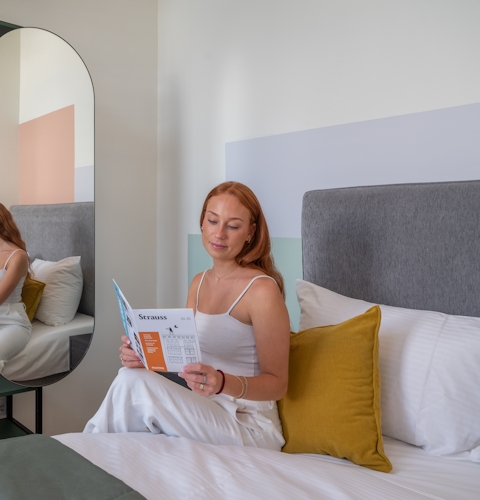
What statistics tell us about travel in 2021
05/2021 - Bobbi Steele
Smaller hotels are having a difficult time conforming to the changing hygiene regulations that governments are imposing, and after looking at the statistics, this is likely to continue until 2022—or later.
These numbers indicate that travel levels might take a similar amount of time to go back to normal, as people begin to regain financial stability and vaccine distribution has stabilised. For smaller hotels who are dependent on international tourism, this might mean continuing in questionable economic circumstances.
As of early May, the restrictions on domestic travel throughout Europe were still in place, with many cities still in hard lockdown measures to prevent the spread of the virus. Travellers are resorting to pushing their travel plans for spring and early summer to a later time frame, in the hopes that domestic travel restrictions will be lessened as the vaccine becomes readily available and numbers decrease during the summer.
This is even more restricted on an international level, meaning both domestic and international movement is still constrained, even after many countries have successfully vaccinated many of their high-risk groups. Lockdown measures reflect the increasing number of cases in spring 2021, proving that the vaccine rollout needs to achieve about 85% of a population before leading to herd immunity.
As countries begin to hit this goal and reopen for travel, this could be in the form of travel bubbles, like those that have already been seen between parts of Australia and New Zealand, where citizens can move freely without needing to go into quarantine.
Eventually, the goal for many countries throughout the world might be to continue to add other locations to their travel bubble until it encompasses the entire globe. With Covax securing 2 billion doses by the end of the year, travel restrictions might only last until the end of 2021 and possibly into 2022, as economies with underdeveloped healthcare systems organise to distribute the vaccine.
Until that time, however, many smaller hotel chains that rely on international and domestic tourism are still trying to hold on until their concepts align with hygiene regulations. This might not be the best solution either,as many hotels are adapting to digital concepts that fit both the hygiene regulations and modern travel expectations.
An example of these new concepts would be removing the reception, lobby and kitchen, as younger travellers tend to value more authentic encounters with locals instead.
Receptions and lobbies are also problematic during pandemic conditions, as they force the reception staff to be in continuous contact with people from around the world with differing virus variants as well as culturally different standards for social distancing and hygiene regulations. Just between the US, Australia and Europe alone, the stringency varies to a large extent, which can be seen in the graph from Our World in Data above.
By replacing the reception and lobby with more space for amenities, such as kitchens and sofas, this means many are getting more space in their rooms they can put to use when it comes to unexpected delays or flight cancellations which are common as lockdowns are lifted and reinstated depending on the infection rates.
Traditional hotels can cut down on these extras and replace them with digital models not only to save money, but to adhere to emerging expectations that have developed under pandemic conditions.
Even with millions of vaccine doses being released, most countries are still only vaccinating vulnerable groups, which will most likely continue until the end of the 2021 tourist season. This might lead to a tourist boom in 2022 as some are predicting, but it’s more likely that only domestic tourism will increase. This is due to te financial constraints many have faced during the crisis, which will take more than lifted lockdowns and vaccines to recover from.
For smaller hotels holding on until this boom, this might not happen soon enough, so digitalisation and cost cutting structures through digital empowerment become more realistic than waiting and hoping for the best.
For example, a property in Vienna moved to a digital channel and increased occupancy by 150% and revenue by 20%. This was with a mid-stay model with a reduced ADR (average daily rate), so it is expected that revenue would increase as well in a short-stay model.
Some of the benefits that digitalisation offers that remained previously inaccessible to smaller hotels also include automatic price adjustments to stay competitive on the market.
As many might have experienced before, events or small festivals increase the demand for rooms in a city. This can be seen in the Christopher Street Day celebrations on various summer weekends throughout Europe, where large numbers of people travel only for one weekend, dramatically increasing the cost of a hotel room for three days before the price goes back to normal.
Some of these events happen quickly, change location or are new to small hotel owners, who only find out after their rooms have been fully booked at a lower ADR. With a digital model, prices are increased automatically multiple times per day to adjust to the market. This means the rooms would have been booked at a higher price automatically during this increased demand.
Over the past year, numa Go has and continues to pioneer simple, efficient and much needed technology for the hospitality industry --- and we want to share that technology with you. Our team comes from a mixed engineering and hospitality background to help design features that actually help the average hotel owner. No matter the size of your hotel, numa Go gives you the tools and benefits you need to take advantage of the digital age.






